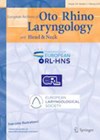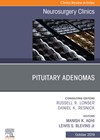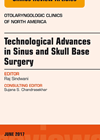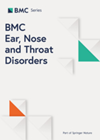
Journal Reviews
Organoids in otolaryngology
This interesting review article summarises the status as well as future prospects of organoid technology in our field. Organoids are a mass of cells which are typically cultured in vitro with 3D technology. They simulate miniature tissues and organs and...
3D endoscopy in pituitary adenoma surgery
Endoscopic approach for pituitary adenoma surgery is well recognised. There has been recent refinement of 3D endoscopy technology which improves on the depth of vision offered and more compact delivery. This may improve visualisation of the critical structures involved in...
Rhinology and 3D printing
3D printing has increasing applications in rhinology, for instance to create patient-specific preoperative models for procedure planning, including designing a template for reconstruction planning following tumour resection, patient consultation and customised prostheses. The authors focused their review on the role...
3D ultrasonography for evaluation of muscles following facial palsy
Reconstructive surgery for facial nerve palsies is not recommended beyond two to three years after a degenerative facial nerve lesion. Since the time course of muscle atrophy is variable, this timeline is a rough guideline. The only assessment method currently...









